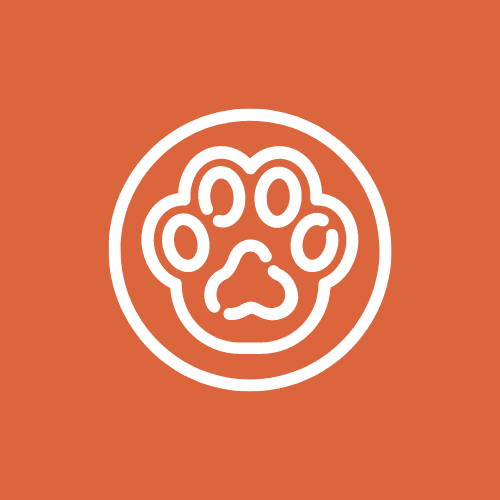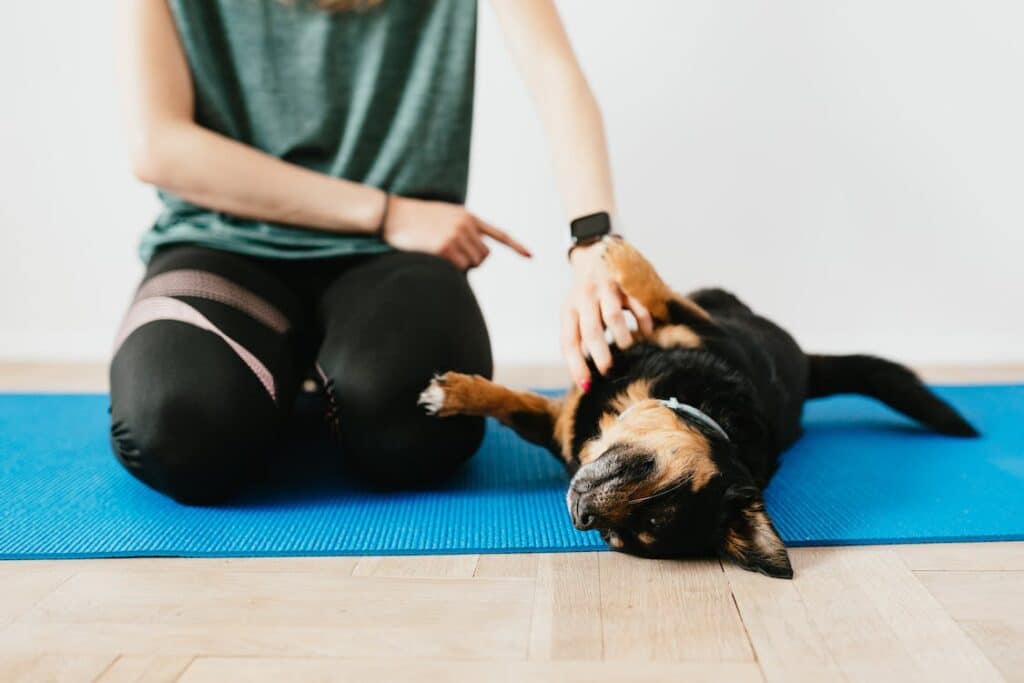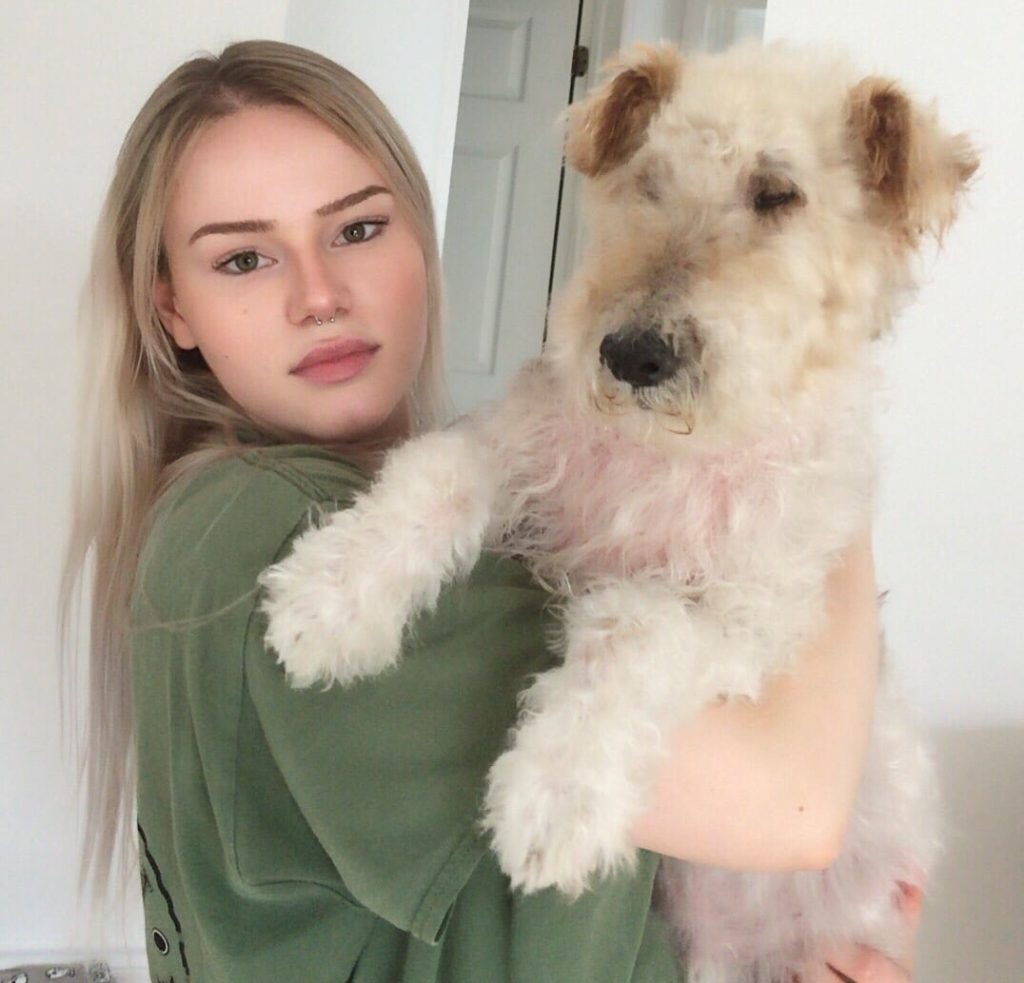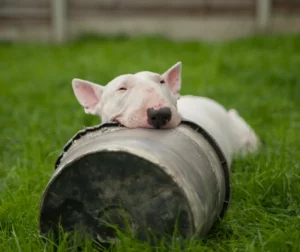Knowing how to punish your dog properly can be difficult. Don’t worry, he is not looking for revenge or rebellion. He only responds to his natural needs and has no conscience between good and evil.
Most of the time we think that punishment is related to reprimanding your dog by saying “NO”, “Stop!” or “That’s enough!”. Others will spray their dog with water or give them a spank.
All these ways do not allow the dog to learn. In addition, it increases his stress level and lowers his confidence. The goal is for him to want to listen instead of avoiding a negative consequence. Of course, that’s easier said than done!
How to Properly Punish Your Dog?
Punishment serves to decrease the likelihood of a behavior reoccurring by applying an immediate consequence following an undesirable behavior. On the other hand, there are good and bad ways to punish a dog.
The best way to punish a dog is to use negative punishment. This method consists of removing something that the dog likes from its environment to decrease the likelihood that the behavior will happen in the future.
For example, if your dog jumps on you, ignore him by walking away and crossing your arms. Your attention is therefore removed from the environment. Your attention was reinforcing your dog’s jumps, so he’ll be less likely to jump on you in the future.
This is why, by continuing to give attention to the jumping dog, we reinforce his behavior. This increases the likelihood of him jumping on people in the future.
The wrong way to punish your dog is to use positive punishment. This method involves adding something unpleasant to the dog’s environment, to decrease the likelihood that the behavior will happen again in the future.
For example, putting your knee up to block a dog from jumping. Each time the dog jumps on you, you add pain to his environment to decrease the likelihood of the dog jumping up in the future.
Using this kind of method is aversive and creates a fearful and mistrustful dog. Thus, this increases the risk that he will develop anxiety, depression, and aggression problem.
Do Dogs Know When They Are Being Punished?
You may think your dog feels guilty when you reprimand him since he gives you a guilty look or looks ashamed. On the other hand, the dog never feels guilty for his actions.
No dogs do not understand the consequences of their actions. So they can’t feel guilty. The dog that looks guilty shows fear and stress. These are called appeasement behaviors and they are used to settle a conflict.
For example, the dog who looks guilty after destroying an object has probably done so in the past and felt a strong reaction from his pet parent.
The behaviors that we find problematic are natural. In this situation, the dog lacks stimulation and wants to chew. He, therefore, wanted to stimulate himself and meet his masticatory needs by chewing on an object.
How to Punish Your Dog That Misbehaves?
Not all unwanted behaviors can be handled the same. Here are examples of natural behaviors: barking, jumping, digging, biting, chewing, leash pulling, chasing, and resource guarding.
The best way to punish your dog is to use a combination of negative punishment and positive reinforcement. Some behaviors need to be managed by redirecting the dog’s attention to an appropriate activity.
If your dog seeks your attention by barking or jumping up, the best solution is to ignore him. When he stops jumping or barking, wait 3 seconds and reward him with a high-value treat and petting. By waiting 3 seconds you will make sure not to reinforce the unwanted behavior.
When your dog’s attention is on something else, redirect his attention to an appropriate activity. Here, the punishment is to take away a privilege, like being in the yard, being on the sofa, and looking out the window. For punishment to be effective, you must redirect his attention as soon as the unwanted behavior arises. Timing is the key!
For example, if my dog steals an object to chew on, I have to get him a dog bone or chew as quickly as possible. Thus, you offer him an outlet where he can relieve his chewing urges and be mentally stimulated. It is important to make an exchange so as not to create a conflict. This way you will avoid resource guarding behaviors. In addition, the exchange must be equivalent. So, it is beneficial to offer something as good or even better than the item he found.
Most of the unwanted behaviors are actually because the dog lacks stimulation and physical activity. Make sure to give your dog enough exercise during the day and stimulate his brain with an interactive bowl or an interactive toy, like a Kong.
How to Be Assertive With Your Dog?
Being firm doesn’t mean yelling or intimidating your dog. On the contrary, one could be very sensitive and too soft. Intonation, self-control, and posture play a big role in being heard.
Being firm with your dog means setting limits and enforcing them by being understanding and forgiving. The goal is to have self-confidence, to guide him, and to make him feel protected in our presence. The voice tone should be dry and short, and the back should be straight while remaining calm and relaxed.
If you have trouble getting your dog’s attention, get in front of him. By preventing him from seeing what is distracting him, you redirect his attention to you. Anticipating the outcome positively will help keep the right attitude. This way, you will be more motivating for your dog and can avoid getting discouraged.
Do not repeat the cues several times in a row. For example, ask your dog to sit only once, then wait a few seconds. If he doesn’t listen to you, stand in front of him and ask him to sit again. If he’s still not listening to you, it’s either because he hasn’t mastered the cue yet, he’s too stimulated, or he’s too stressed.
Dogs tend to discriminate when taught a cue. For example, if I teach my dog to sit in the living room, he may not understand that “sit” means the same thing in the bedroom and outside. This is why it is important to teach your dog the cue in all rooms of the house and all situations.
How Long Should You Punish Your Dog?
The punishment must be given at the right time so that the dog can make the correct association between the behavior and its consequences.
Punishment must occur at the same time as the unwanted behavior occurs. Punishing your dog 3 minutes after he did something wrong is already too late. In addition, the punishment must be fair and done within 3 seconds.
For example, if my dog pees in the house when I’m away, there’s no need to punish him when I get home. By doing this, he will associate my arrival with a punishment. He does not understand why he is being punished, since he needed to relieve himself and did not want to do anything wrong. Some dogs will urinate when they are stressed about being left alone. So, punishing your dog adds more stress than he already had.
Identify why your dog does what he does. We cannot effectively manage a behavior if we do not know the root cause. Once we understand, we can then ask ourselves how we can deal with the behavior.
To better manage unwanted behavior, it is beneficial to know how to educate your dog. By teaching him the basic cues, you will have better communication. Also, by knowing how dogs learn, you will better understand their reactions.
Bibliographic Sources:






